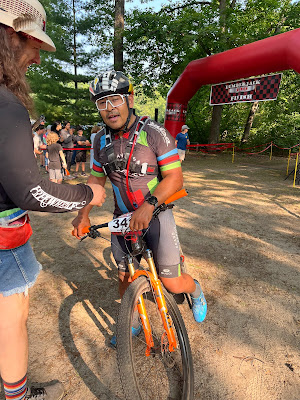There are numerous definitions of functional fitness. The idea that a complex movement is more functional than a biceps curl was something that was fought about a decade ago. Today, the more nuanced definition of fitness, is what is required to do the desired task. If the task is to run a marathon or lift 300lbs, then fitness is the ability to do this. The fitness goal dictates the type and style of exercise.
I think I have a definition that is better.
When we are born we are essentially useless, helpless, and in total dependence. Let's represent this with one solid black dot. We start to crawl. We explore the world around us, interacting with it with our hands. Let's draw one small circle around are black dot. A concentric circle. Our first layer. We start to walk. Another layer of exploring takes place. A vertical dimension is added. We also explore more of our world. Again, lets's draw another layer around our circle.
This goes on for decades. We grow, we run, we climb, we play, we play a sport, we learn a skill, we learn more skills, we read, we combine skills, we struggle, we overcome, we add layer, upon layer, upon layer to our black dot.
Somewhere at sometime without really realizing it, the layers stopped being added. Some layers grew thinner.
Somewhere the last warm up was done, the last sprint around the track, the last mountain climbed, the last goal trained for. Perhaps it came fast or came slow. But, the layers started to slowly peal away.
Layers mean options, just like a healthy joint has more options of movement. More layers to a person, means more life is available. Imagine if you couldn't read, all the great books that aren't available to you. If you can't walk, all the places you can no longer go. If your knee hurts, less steps taken, but the hike with your grandkid isn't an option.
They did a study about climbers, beginner and advanced. They tracked their eyes as they studied a rock climbing wall. The beginner saw one or two options. The advanced climber saw many routes. Fitness allows more options in life.
They did other studies where they asked people to judge the height of stairs and hills. Out of shape individuals thought the gradient was higher or harder. They saw problems as more difficult.
They go through life with the thought of not possible.
When I was twenty I'd watch football with they eye that I can, will do this. There was never doubts. I watch now and wonder how my body survived 11 years of playing with almost no injuries. I know it's not something my body can handle anymore.
Elbow injuries make bench pressing impossible these days. But at one time benching 395 was part of my psyche. I know benching big number is not part of the layers of fitness anymore.
A few years ago the idea of riding my bike 100 miles was crazy. Now it doesn't seem that difficult of task. I've done it several times, know how to train for it and it is just a fun challenge. A layer was added.
I looked back on my life and running a few miles was no big thing. The last decade after years of injuries and lack of interest, running layer had been lost. 5 miles seemed crazy. I reevaluated how to return to running and can say, the running layer has been added once again.
One of the biggest metanalysis of mortality is grip strength. It probably doesn't mean just train grip, but a strong grip means a level of strength (a layer ) that was never lost.
Another important question for aging, can you cut your own toe nails and can you chew hard food. Why? The ability to cut your own toe nails shows a degree of mobility, with less chance of ingrown toe nails that becomes uncomfortable and limits walking, limits movement. Chewing hard food, mean more calories, more protein and less likely to lose your muscle.
Aging is losing one layer slowly over time. They have all these metrics about loss of muscle, power, strength every decade. Percentage decline. Delayering if you will. The way you interact with the world shrinks.
So what is functional fitness? It's keeping your layers. It's adding layers. It's looking back at things you could do, that perhaps you lost and working to reclaim or keep them. It could be a a mile run, it could be an olli kick flip. Perhaps it's learning a musical instrument, or picking up one that's long been discarded. Maybe it's training for a race in a distance that you never thought about. It's rehabbing the shoulder or ankle that you just decided to live with even though it stopped you playing volleyball.
Functional fitness is adding layers, it's thickening the ones you have. It's keeping the interaction with the world in expansion. It's keeping the mind seeing options and possibilities.



